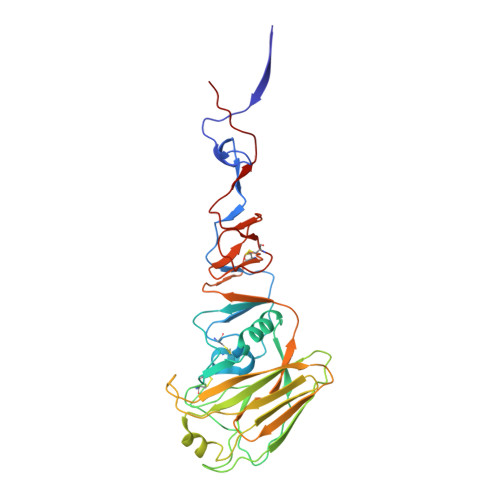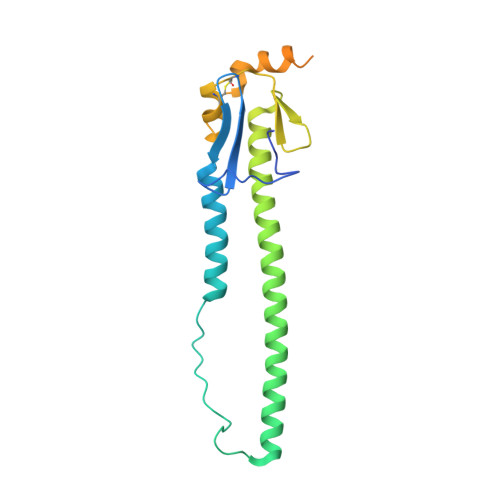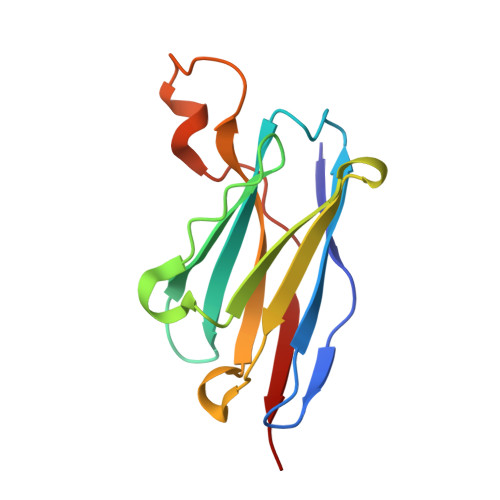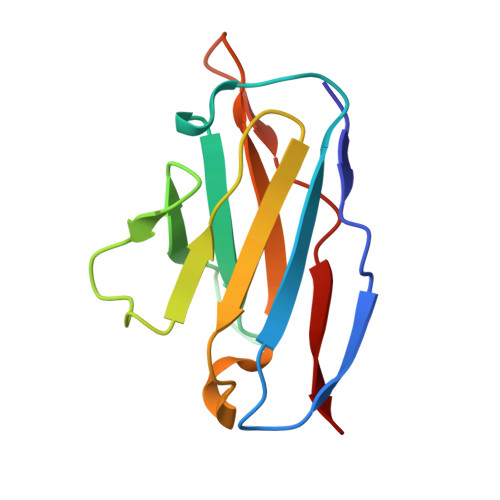Eliciting a single amino acid change by vaccination generates antibody protection against group 1 and group 2 influenza A viruses.
Ray, R., Nait Mohamed, F.A., Maurer, D.P., Huang, J., Alpay, B.A., Ronsard, L., Xie, Z., Han, J., Fernandez-Quintero, M., Phan, Q.A., Ursin, R.L., Vu, M., Kirsch, K.H., Prum, T., Rosado, V.C., Bracamonte-Moreno, T., Okonkwo, V., Bals, J., McCarthy, C., Nair, U., Kanekiyo, M., Ward, A.B., Schmidt, A.G., Batista, F.D., Lingwood, D.(2024) Immunity 57: 1141-1159.e11
- PubMed: 38670113
- DOI: https://doi.org/10.1016/j.immuni.2024.03.022
- Primary Citation of Related Structures:
8UT3, 8UT4, 8UT5, 8UT6, 8UT7, 8UT8, 8UT9, 8UWA - PubMed Abstract:
Broadly neutralizing antibodies (bnAbs) targeting the hemagglutinin (HA) stem of influenza A viruses (IAVs) tend to be effective against either group 1 or group 2 viral diversity. In rarer cases, intergroup protective bnAbs can be generated by human antibody paratopes that accommodate the conserved glycan differences between the group 1 and group 2 stems. We applied germline-engaging nanoparticle immunogens to elicit a class of cross-group bnAbs from physiological precursor frequency within a humanized mouse model. Cross-group protection depended on the presence of the human bnAb precursors within the B cell repertoire, and the vaccine-expanded antibodies enriched for an N55T substitution in the CDRH2 loop, a hallmark of the bnAb class. Structurally, this single mutation introduced a flexible fulcrum to accommodate glycosylation differences and could alone enable cross-group protection. Thus, broad IAV immunity can be expanded from the germline repertoire via minimal antigenic input and an exceptionally simple antibody development pathway.
Organizational Affiliation:
The Ragon Institute of Mass General, The Massachusetts Institute of Technology and Harvard University, 400 Technology Square, Cambridge, MA 02139, USA.




















